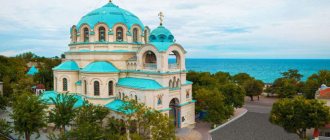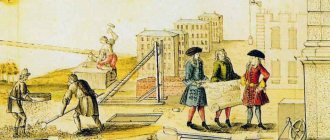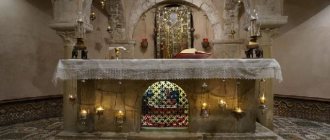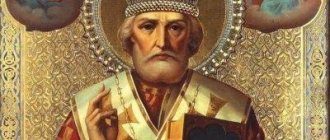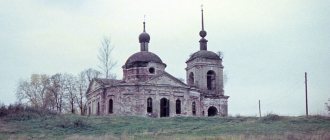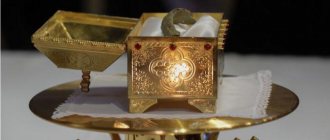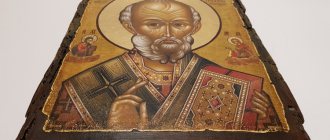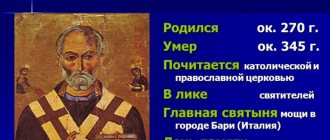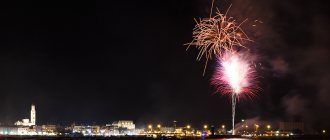This term has other meanings, see St. Nicholas Cathedral.
| Orthodox church | |
| Cathedral of St. Nicholas the Wonderworker | |
| Kathedrale zum Heiligen Nikolaus | |
| 48°11′50″ n. w. 16°23′05″ E. d.HGЯOL | |
| A country | Austria |
| City | Vienna, Jauresgasse, 2 |
| Confession | Orthodoxy |
| Diocese | Viennese |
| Building type | Church |
| Architectural style | historicism |
| Author of the project | Grigory Kotov |
| Builder | Luigi Giacomelli |
| Date of foundation | 1893 |
| Construction | 1893-1899 |
| Side chapels | Upper - St. Nicholas the Wonderworker; the lower one - the blessed prince Alexander Nevsky. |
| Status | Protected by the state |
| Material | brick |
| State | active |
| Website | nikolsobor.org |
| Media files on Wikimedia Commons | |
Cathedral of St. Nicholas the Wonderworker
in Vienna (3rd district) - an Orthodox church; currently the cathedral of the Vienna Diocese of the Russian Orthodox Church (Moscow Patriarchate).
Rector - Bishop of Kafsky, Alexy (Zanochkin)
History[ | ]
First Temple[ | ]
The first, Trinity, church was transported to Vienna in 1762 at the request of the ambassador of Prince D. M. Golitsyn from Augsburg. The temple had an iconostasis “on blue damask”. The church was placed in the prince’s house, and then “in a special living room.”
In 1781, the church moved to another, but cramped and poorly lit place. In 1803 the temple was moved to a new, more suitable location, and in 1812 - to a house at Walfischgasse 5
Modern cathedral[ | ]
The temple was built as an embassy temple (at the Russian imperial embassy) in 1893-1899 according to the design of Grigory Ivanovich Kotov by the Italian architect Luigi Giacomelli. A significant part of the construction costs (400,000 rubles) came from donations from Emperor Alexander III.
Consecrated on April 4, 1899 by Archbishop of Kholm and Warsaw Jerome (Ekzemplyarsky).
After the outbreak of the First World War (1914), due to the severance of diplomatic relations between Russia and Austria, the embassy and the cathedral were closed and were under the protection of a neutral power - Spain. At the beginning of 1921, the temple was inspected by Archbishop Eulogius (Georgievsky), who at the end of 1920 was appointed by the decree of the All-Russian Exhibition Center of the South-European Church as the manager of Western European Russian churches, and found it in complete desolation[1]. Metropolitan Eulogius successively replaced several rectors at the parish, nevertheless he stated: “The parish in Vienna is small, weak, barely eking out an existence.”[2] Metropolitan Eulogius, together with his parishes, transferred in February 1931 to the jurisdiction of the Patriarchate of Constantinople (Western European Exarchate of Russian Parishes ).
After the outbreak of the Great Patriotic War in June 1941, all the property of the Soviet diplomatic mission in Vienna (diplomatic relations were interrupted after the Anschluss of Austria in March 1938 and its annexation to Germany), including the cathedral, was confiscated by the German Foreign Office and transferred to the use of the Imperial Higher Music school of the city of Vienna (now the Vienna University of Music and Fine Arts).
On May 19, 1943, the cathedral was transferred for temporary use to the ROCOR community, led by retired colonel Georg von Genuk.
In October 1945, the temple, completely preserved (unlike the embassy building), was opened as a parish of the Moscow Patriarchate by Archbishop Photius (Topiro) who arrived from Moscow for this purpose [3]; in 1946, Bishop Sergius (Korolyov) was appointed to Vienna as vicar of the patriarchal exarch in Western Europe.
In 1962, due to the establishment by the Synod of the Russian Orthodox Church of the Vienna and Austrian Diocese (legally recognized by the Austrian government in 2012[4]), the temple began to be called the cathedral.
From 1975 to 1999, the Archbishop (then Metropolitan) of Vienna was Irenaeus (Zusemil). On May 19, 1969, the parish of the cathedral was recognized as a legal entity.
From 2003 to 2008, the cathedral underwent major renovations (the main sponsors were the Russian Federation, the oil industry, the magistrate of the city of Vienna, the Austrian Ministry of Culture and), after which it was planned to consecrate the renovated temple as part of the visit of Patriarch Alexy to Patriarch Alexy, officially announced at the end of November 2008. Austria, scheduled for December 20-23[5][6][7]. However, instead, on December 21, 2008, a memorial service was held for the deceased Patriarch Alexy II[8].
Spaces. St. Nicholas Cathedral in Vienna.
Share
“Landstrasse” is translated from German as “country road” - this is the name of one of the central districts of Vienna. In the thirteenth century there was indeed a small village here, but now there is nothing rural left in the surrounding panorama, except that this cozy corner of the Austrian capital is a little more green than others. But it is famous not for its pastoral landscapes, but for such architectural gems as the Belvedere Palace, the Hundertwasser House with the dancing pavement around it, and... the Russian Church of St. Nicholas! Vienna is rich in unusual buildings, but St. Nicholas Cathedral, built in the nineteenth century at the Russian embassy, is able to amaze even the most experienced wanderer. Experts define the style of this temple as pseudo-Russian - the prefix “pseudo” here does not expose a fake, but only states that several architectural trends were used in the project. And the main source of inspiration for the creators of the temple were the traditions of ancient Russian architecture. It is amazing to see in the center of Vienna the golden five-domed onion domes, the central one rising on a green tent, kokoshniks running along the cornice, elegant white stone platbands. And the porch with a gable peaked roof lined with multi-colored ceramic tiles? Forged metal cornices and a patterned ridge make it look like the entrance to a fairytale tower! On the facade of the porch there is a mosaic icon of the Resurrection of Christ, made according to a drawing by the famous artist Fyodor Bruni. The wide stone staircase looks solemn, on the top platform of which you can see a stained glass image of St. Nicholas - this is the only stained glass window of the 19th century that survived the Second World War. The cathedral is surrounded by five-meter galleries, the arched openings of which are decorated with weights. In bad weather, the procession around the church takes place under these canopies on carved pillars. The interior of the church, even in cloudy weather, seems to be flooded with sunlight - this effect is created by multi-colored window glass. The low gilded iconostasis is made of cypress. Icons for him were painted on bronze boards by artists Fyodor Bruni and Alexei Kharlamov. The walls and vaults of the St. Nicholas Church were painted in 2008 by the outstanding icon painter of our time, Archimandrite Zinon. Many guests of Vienna rush to St. Nicholas Cathedral just to see these frescoes, made in a special, unique style. Finding the cathedral is not difficult - you can get here by bus route 4A. The Stadtpark metro station is located very close to the temple. And the electric train stop can be seen from the church windows - it’s called Rennweg.
Notes[ | ]
- Metropolitan Evlogy (Georgievsky). The path of my life //Chapter 20., p. 347.
- Metropolitan Evlogy (Georgievsky). The path of my life //Chapter 20., p. 347.
- THE TRIP OF THE REVEREND PHOTIUS, ARCHBISHOP OF ORYOL AND BRYANSK, TO AUSTRIA AND CZECHOSLOVAKIA. // ZhMP.
1945, No. 11, p. 14. - The Austrian authorities have officially approved the legal status of the Vienna Diocese of the Russian Orthodox Church. Patriarchy.ru.
- A press conference dedicated to the upcoming visit of His Holiness Patriarch Alexy to Austria was held in Vienna's St. Nicholas Cathedral. Patriarchia.ru, December 1, 2008.
- For the visit of His Holiness Patriarch Alexy to Austria, it is planned to complete the restoration of the Russian Cathedral in Vienna
- Neuer Glanz für Nikolauskathedrale (inaccessible link) (German)
- His Holiness Patriarch of Moscow and All Rus' Alexy II reposed in the Lord Archival copy dated December 24, 2008 on the Wayback Machine (German)
Abbots
- Alexander Nikolaevsky
- Avenir Dyakov
- Khariton (Drobotov)
- Vasily Vinogradov (1944 - 1945)
- Alexander Vanchakov (1945 - 1951)
- Arseny (Shilovsky) (1951 - 1962)
- Vitaly Malyuzhkovich (1966 - 1970)
- Victor Bekarevich (1970 - 1979)
- Evgeniy Misseyuk (1979 - 1982)
- Pavel Krasnotsvetov (1982 - 1987)
- Mikhail Turchin (1987 - 1997)
- Nikolay Orlov (December 25, 1997 - March 12, 2002)
- Vladimir Tyshchuk (since March 12, 2002)
Links
Germany Switzerland Kissingen · Homburg
·
Ems
·
Baden-Baden
·
Berlin
·
Vevey
·
Weimar Wiesbaden
·
Darmstadt
·
Dresden
·
Geneva
·
Leipzig
·
Potsdam
·
StuttgartAustria-Hungary Vein · Iröm
·
Carlsbad
·
Lemberg
·
Marienbad
·
Meran
·
FranzensbadBulgaria Bakajik · Sofia
·
ShipkaRest of Europe Athens · Belgrade
·
Bucharest
·
Constantinople
·
Copenhagen
·
London
·
StockholmPalestine Jerusalem · Gethsemane
·
Mount of Olives
·
Jaffa
·
Haifa
·
Ein Karem
·
HebronUSA and Canada Manhattan · Brooklyn
·
Cleveland
·
Sitka
·
Chicago
·
YonkersOther countries Buenos Aires · Beijing
·
Tokyo
·
Kyoto
·
Harbin
Story
First Temple
The first, Trinity, church was transported to Vienna in 1762 at the request of the ambassador of Prince D. M. Golitsyn from Augsburg. The temple had an iconostasis “on blue damask”. The church was placed in the prince’s house, and then “in a special living room.”
In 1781, the church moved to another, but cramped and poorly lit place. In 1803 the temple was moved to a new, more suitable location, and in 1812 - to a house at Walfischgasse 5
Modern cathedral
The temple was built as an embassy temple (at the Russian imperial embassy) in 1893-1899 according to the design of Grigory Ivanovich Kotov by the Italian architect Luigi Giacomelli. A significant part of the construction costs (400,000 rubles) came from donations from Emperor Alexander III.
Consecrated on April 4, 1899 by Archbishop of Kholm and Warsaw Jerome (Ekzemplyarsky).
After the outbreak of the First World War (1914), due to the severance of diplomatic relations between Russia and Austria, the embassy and the cathedral were closed and were under the protection of a neutral power - Spain. At the beginning of 1921, the temple was inspected by Archbishop Eulogius (Georgievsky), who at the end of 1920 was appointed by the decree of the All-Russian Exhibition Center of the South-European Church as the manager of Western European Russian churches, and found it in complete desolation[1]. Metropolitan Eulogius successively replaced several rectors at the parish, nevertheless he stated: “The parish in Vienna is small, weak, barely eking out an existence.”[2] Metropolitan Eulogius, together with his parishes, transferred in February 1931 to the jurisdiction of the Patriarchate of Constantinople (Western European Exarchate of Russian Parishes ).
After the outbreak of the Great Patriotic War in June 1941, all the property of the Soviet diplomatic mission in Vienna (diplomatic relations were interrupted after the Anschluss of Austria in March 1938 and its annexation to Germany), including the cathedral, was confiscated by the German Foreign Office and transferred to the use of the Imperial Higher Music school of the city of Vienna (now the Vienna University of Music and Fine Arts).
On May 19, 1943, the cathedral was transferred for temporary use to the ROCOR community, led by retired colonel Georg von Genuk.
In October 1945, the temple, completely preserved (unlike the embassy building), was opened as a parish of the Moscow Patriarchate by Archbishop Photius (Topiro) who arrived from Moscow for this purpose [3]; in 1946, Bishop Sergius (Korolyov) was appointed to Vienna as vicar of the patriarchal exarch in Western Europe.
In 1962, due to the establishment by the Synod of the Russian Orthodox Church of the Vienna and Austrian Diocese (legally recognized by the Austrian government in 2012[4]), the temple began to be called the cathedral.
From 1975 to 1999, the Archbishop (then Metropolitan) of Vienna was Irenaeus (Zusemil). On May 19, 1969, the parish of the cathedral was recognized as a legal entity.
From 2003 to 2008, the cathedral underwent major renovations (the main sponsors were the Russian Federation, the oil industry, the magistrate of the city of Vienna, the Austrian Ministry of Culture and), after which it was planned to consecrate the renovated temple as part of the visit of Patriarch Alexy to Patriarch Alexy, officially announced at the end of November 2008. Austria, scheduled for December 20-23[5][6][7]. However, instead, on December 21, 2008, a memorial service was held for the deceased Patriarch Alexy II[8].
Notes
- Metropolitan Evlogy (Georgievsky). The path of my life //Chapter 20., p. 347.
- Metropolitan Evlogy (Georgievsky). The path of my life //Chapter 20., p. 347.
- THE TRIP OF THE REVEREND PHOTIUS, ARCHBISHOP OF ORYOL AND BRYANSK, TO AUSTRIA AND CZECHOSLOVAKIA. // ZhMP.
1945, No. 11, p. 14. - The Austrian authorities have officially approved the legal status of the Vienna Diocese of the Russian Orthodox Church. Patriarchy.ru.
- A press conference dedicated to the upcoming visit of His Holiness Patriarch Alexy to Austria was held in Vienna's St. Nicholas Cathedral. Patriarchia.ru, December 1, 2008.
- For the visit of His Holiness Patriarch Alexy to Austria, it is planned to complete the restoration of the Russian Cathedral in Vienna
- Neuer Glanz für Nikolauskathedrale (inaccessible link) (German)
- His Holiness Patriarch of Moscow and All Rus' Alexy II reposed in the Lord Archival copy dated December 24, 2008 on the Wayback Machine (German)
LiveInternetLiveInternet
Cathedral in the name of St. Nicholas of Myra, Cathedral of the Vienna and Austrian Diocese of the Russian Orthodox Church. Russians have lived in Austria since ancient times. In most cases these were diplomats and trade representatives. There were entire Russian trading colonies here. There was such a colony, for example, in Tokaj (at that time part of the Austro-Hungarian Empire). She was engaged in the purchase and delivery of famous Tokaji wines to Russia. A church was built for this colony, and priests for it were sent from Russia. Austria-Hungary also included areas where entire nations that adhered to Orthodoxy lived: residents of Galicia and Bukovina, Hungarians, Serbs, Romanians. Orthodox Greeks have long lived in Vienna and its surrounding areas. Beginning in 1701, with the appointment of the Russian ambassador to Vienna, Prince. P.A. Golitsyn, diplomatic relations between Russia and Austria became permanent. In the absence of their own church, all Orthodox Christians living in Vienna were spiritually nourished by the Greek and Serbian clergy, in the Greek Church in the name of St. George the Victorious. But at the beginning of the war between Turkey and Russia and Austria (1735-1739), almost the entire Greek population and Greek priests, as subjects of the Turkish Sultan, left Vienna. In 1761, at the congress in Augsburg there was a Russian mission, at which there was a camp church of the Holy Trinity. At the church there was Hieromonk Narkiss (Kvetka) and two clergymen. On October 10, 1761, the mission arrived in Vienna, and at the request of Golitsyn, the church along with the clergy was left in Vienna. Soon the first rector was appointed here: priest Simeon Matveev, transferred from the Russian church of The Hague.
The Vienna Church was originally located in the ambassador's apartment. But religious services, devoutly performed with good singing, are also beginning to be attended by the local Orthodox population of other nationalities. So, on March 19, 1776, Golitsyn wrote to Catherine II: “Not only for people of the Greek faith, who in considerable numbers come to this church to listen to the Divine service, but also for the local people, out of the sole curiosity of its visited inhabitants, I cannot do without this so as not to have a very spacious apartment for it (the church). From 1842 to 1884, the rector of the Vienna Embassy Church was the outstanding Slavic figure Archpriest Mikhail Raevsky. Prot. Raevsky is also known for his translations of church liturgical books from Greek into German. Prot. Raevsky came up with the idea of the need to create a majestic stone temple in Vienna. In 1885, Archpriest Fr. Alexander Nikolaevsky, who was destined to realize the idea and dream of Archpriest. Raevsky. But the funds collected were not enough even to build at least a small temple. Then the Russian ambassador, Prince Lobanov-Rostovsky A.B. applied to St. Petersburg and received an allocation for construction in the amount of 400 thousand rubles. A place was allocated for the construction of the cathedral in the garden of the plot acquired for the embassy. On October 3, 1893, the foundation stone of the temple took place. Construction work was carried out according to the design of academician G. Kotov by the Italian architect Giacomelli and was completed in 1899... The consecration of St. Nicholas Cathedral was performed on April 4, 1899 by Archbishop Jerome of Kholm and Warsaw. By this day, the abbots who carried out their service in Russian churches in Europe arrived in Vienna: Rev. Maltsev from Berlin, prot. F. Kardasevich from Budapest, prot. Protopopov from Wiesbaden, priest. Volsky from Stuttgart, priest. Annenkov from Dresden, prot. Soloviev from Coburg, Rev. Apraksin in Prague and many others. There were also rectors of the Greek and Serbian churches in Vienna, as well as priests of the Bosnian Russian regiments. The Russian Ambassador Count P.A. was present at the consecration of the temple. Kapnist, representatives of the Austrian authorities and the mayor of Vienna Strabach, diplomats, representatives of various Slavic societies. After the liberation of Vienna by Soviet troops, the temple, although severely damaged during hostilities, was restored through the efforts of the military and reopened under the jurisdiction of the Moscow Patriarch. For this purpose, Archbishop Photius (Topiro) came to Vienna in October 1945. Archbishop Sergius (Korolyov) was appointed in 1946 to care for the Viennese-Austrian flock. He worked hard to organize the community and eliminate the damage caused to the Vienna Cathedral by the war. In 1949, Archbishop Sergius was transferred to Berlin. Archimandrite Arseny (Shilovsky) was appointed to the Vienna Cathedral. In 1951, the Vienna-Austrian Deanery was established, and Father Arseny became the first dean. This deanery was transformed into the Vienna-Austrian Diocese of the Russian Orthodox Church in 1962. Since the war, many premises of the temple have been desolate. On May 9, 1969, the parish of St. Nicholas Cathedral was recognized as a legal entity.
On March 13, 1975, Archbishop and then Metropolitan Irenaeus became the Archbishop of Vienna and Austria. Since the fall of 1997, after the death of Archpriest Mikhail Turchin, Archpriest has been in charge. Nikolay Orlov.
In 1999, the Russian Cathedral in Vienna celebrated its centenary. Today, his parish consists not only of Russian emigrants and people from the former Soviet Union, but also Austrians, Germans, Serbs, Romanians, people of many different nationalities.
By the determination of the Holy Synod of May 7, 2003, Bishop Hilarion (Alfeev) was appointed Bishop of Vienna and Austria with the assignment of temporary administration of the Budapest and Hungarian diocese and retaining the post of Representative of the Russian Orthodox Church to European international organizations in Brussels.
With his appointment, a new page opened in the life of the parish. Immediately after the arrival of the bishop, large-scale restoration work began in the temple. In the fall of 2006, Bishop Hilarion invited the outstanding icon painter Archimandrite Zinon (Theodore) to paint the temple. The name of this master does not need recommendations. He worked in the Pskov-Pechersky Monastery, in the Trinity-Sergius Lavra, restored the St. Daniel Monastery, worked in many cities of Russia, as well as in Finland, Belgium, and Italy. Work on the painting of the Vienna temple lasted about two years - from November 2006 to September 2008. Archimandrite Zinon worked together with a whole team of icon painters from Russia, among whom were Evgeny Malyagin, Anton Kushaev, Ilya Ivankin, Alexander Mysyk, Vasily Sokolov, Anna Kashirina. Yaroslav and Joanna Yakimczuk from Poland and Tatiana Shilovskaya from Austria also worked with him. Now the temple has acquired not just a new look - its paintings can easily be called an outstanding work of modern church art. When you enter the temple, you are overcome with a feeling of delight: as if the sky is opening up before your eyes, you are contemplating images of the heavenly world. The complex interior space of the Church of St. Nicholas required an extraordinary compositional solution. And Archimandrite Zinon brilliantly coped with this difficult task. The blue background, light color of the painting, clear division into tiers, large scale of compositions and free-standing figures - all this creates the impression of clarity, purity and freedom. Graceful ornaments and decorative details give the temple an elegant look. But the main thing is that the painting is deeply thought out from a theological point of view and is closely connected with worship. The dome contains the composition “The Descent of the Holy Spirit on the Apostles.” In the altar apse there is an image of Christ the Pantocrator. And the conostasis of the early twentieth century, preserved from the time the temple was built, covers the altar arch to two-thirds of its height, leaving the image of the Savior in the apse visible to the eye. In front of him are both the priests standing in the altar and the laity praying in the church, thereby the image of Christ unites the people of God in congregational prayer. The altar also depicts prophets, saints, and scenes from the history of Abraham, in which the meaning of the Eucharist, the main sacrament of the Church, is prophetically revealed. Gospel scenes are depicted on the walls - the earthly life of Christ surrounds those praying in the temple, making them witnesses of saving events and participants in the Kingdom of God. The full-length figures of saints in the lower tier show that they are invisibly present next to us, performing the liturgy together with the earthly Church. The stylistic unity of the painting is striking. The style set by the master was impeccably maintained by the icon painters. Focused on classical examples of Russian pre-Mongol and Balkan icon painting - calm, harmonious, noble - this style is very consonant with our time, which requires depth and clarity of testimony. This is a truly unique work of monumental painting. In the lower church, also updated during the recent renovation, a new iconostasis made of three types of marble was built according to the design of Archimandrite Zinon. Icons for him were painted back in Russia: the images are solemnly magnificent and in style are also close to the pre-Mongol tradition. Both in icons and in the architecture of the iconostasis, classics triumph – impeccable proportions, precision of drawing, nobility of color. This is truly a masterpiece of church art. In December 2008, all restoration and repair work should be completed. The current rector is Rev. Vladimir Tyshchuk.
Vienna's St. Nicholas Cathedral was built in the best traditions of ancient Russian architecture. The five-domed cathedral building consists of the main church in the name of St. Nicholas and the lower church of St. Alexander Nevsky. A wide stone staircase leads to the upper temple of the cathedral. In the pediment of the porch there is a mosaic icon of the Resurrection of Christ, made by the artist Fyodor Bruni. At the top of the stairs there is a magnificent stained glass window depicting the patron saint of the cathedral - St. Nicholas. Inside the upper temple, light penetrates through the pastel-colored glass windows. Therefore, even in the cloudiest weather, it seems as if the temple is illuminated by the sun. In three windows of the altar: stained glass icons of the Lord Pantocrator, the Mother of God and John the Baptist. The shrine revered by all parishioners is the icon of St. Nicholas - the gift and blessing of His Holiness Patriarch Alexy I. There is also a particle of the relics of St. Nicholas in the reliquary, before which an akathist is usually read on Thursday evenings. Also in the upper church there is an icon of the Mother of God “Deliverer”.
Excerpt characterizing St. Nicholas Cathedral (Vienna)
“I did not have the pleasure of seeing you,” said Prince Andrei coldly and abruptly. Everyone was silent. Tushin appeared on the threshold, timidly making his way from behind the generals. Walking around the generals in a cramped hut, embarrassed, as always, at the sight of his superiors, Tushin did not notice the flagpole and stumbled over it. Several voices laughed. – How was the weapon abandoned? – Bagration asked, frowning not so much at the captain as at those laughing, among whom Zherkov’s voice was heard loudest. Tushin now only, at the sight of the formidable authorities, imagined in all horror his guilt and shame in the fact that he, having remained alive, had lost two guns. He was so excited that until that moment he did not have time to think about it. The officers' laughter confused him even more. He stood in front of Bagration with a trembling lower jaw and barely said: “I don’t know... your excellency... there were no people, your excellency.” - You could have taken it from cover! Tushin did not say that there was no cover, although this was the absolute truth. He was afraid to let down another boss and silently, with fixed eyes, looked straight into Bagration’s face, like a confused student looks into the eyes of an examiner. The silence was quite long. Prince Bagration, apparently not wanting to be strict, had nothing to say; the rest did not dare to intervene in the conversation. Prince Andrey looked at Tushin from under his brows, and his fingers moved nervously. “Your Excellency,” Prince Andrei interrupted the silence with his sharp voice, “you deigned to send me to Captain Tushin’s battery.” I was there and found two thirds of the men and horses killed, two guns mangled, and no cover. Prince Bagration and Tushin now looked equally stubbornly at Bolkonsky, who was speaking restrainedly and excitedly. “And if, Your Excellency, allow me to express my opinion,” he continued, “then we owe the success of the day most of all to the action of this battery and the heroic fortitude of Captain Tushin and his company,” said Prince Andrei and, without waiting for an answer, he immediately stood up and walked away from the table. Prince Bagration looked at Tushin and, apparently not wanting to show distrust of Bolkonsky’s harsh judgment and, at the same time, feeling unable to fully believe him, bowed his head and told Tushin that he could go. Prince Andrei followed him out. “Thank you, I helped you out, my dear,” Tushin told him. Prince Andrei looked at Tushin and, without saying anything, walked away from him. Prince Andrei was sad and hard. It was all so strange, so unlike what he had hoped for. "Who are they? Why are they? What do they need? And when will all this end? thought Rostov, looking at the changing shadows in front of him. The pain in my arm became more and more excruciating. Sleep was falling irresistibly, red circles were jumping in my eyes, and the impression of these voices and these faces and the feeling of loneliness merged with a feeling of pain. It was they, these soldiers, wounded and unwounded, - it was they who pressed, and weighed down, and turned out the veins, and burned the meat in his broken arm and shoulder. To get rid of them, he closed his eyes. He forgot himself for one minute, but in this short period of oblivion he saw countless objects in his dreams: he saw his mother and her big white hand, he saw Sonya’s thin shoulders, Natasha’s eyes and laughter, and Denisov with his voice and mustache, and Telyanin , and his whole story with Telyanin and Bogdanich. This whole story was one and the same thing: this soldier with a sharp voice, and this whole story and this soldier so painfully, relentlessly held, pressed and all pulled his hand in one direction. He tried to move away from them, but they did not let go of his shoulder, not even a hair, not even for a second. It wouldn’t hurt, it would be healthy if they didn’t pull it; but it was impossible to get rid of them. He opened his eyes and looked up. The black canopy of night hung an arshin above the light of the coals. Powders of falling snow flew in this light. Tushin did not return, the doctor did not come. He was alone, only some soldier was now sitting naked on the other side of the fire and warming his thin yellow body. “Nobody needs me! - thought Rostov. - There is no one to help or feel sorry for. But I was once at home, strong, cheerful, loved.” “He sighed and involuntarily groaned with a sigh. - Oh, what hurts? - asked the soldier, shaking his shirt over the fire, and, without waiting for an answer, he grunted and added: - You never know how many people have been spoiled in a day - passion! Rostov did not listen to the soldier. He looked at the snowflakes fluttering over the fire and remembered the Russian winter with a warm, bright house, a fluffy fur coat, fast sleighs, a healthy body and with all the love and care of his family. “And why did I come here!” he thought. The next day, the French did not resume the attack, and the rest of Bagration’s detachment joined Kutuzov’s army. Prince Vasily did not think about his plans. He even less thought of doing evil to people in order to gain benefit. He was only a secular man who had succeeded in the world and made a habit out of this success. He constantly, depending on the circumstances, depending on his rapprochement with people, drew up various plans and considerations, of which he himself was not well aware, but which constituted the entire interest of his life. Not one or two such plans and considerations were in his mind, but dozens, of which some were just beginning to appear to him, others were achieved, and others were destroyed. He did not say to himself, for example: “This man is now in power, I must gain his trust and friendship and through him arrange for the issuance of a one-time allowance,” or he did not say to himself: “Pierre is rich, I must lure him to marry his daughter and borrow the 40 thousand I need”; but a man in strength met him, and at that very moment instinct told him that this man could be useful, and Prince Vasily became close to him and at the first opportunity, without preparation, by instinct, flattered, became familiar, talked about what what was needed.
